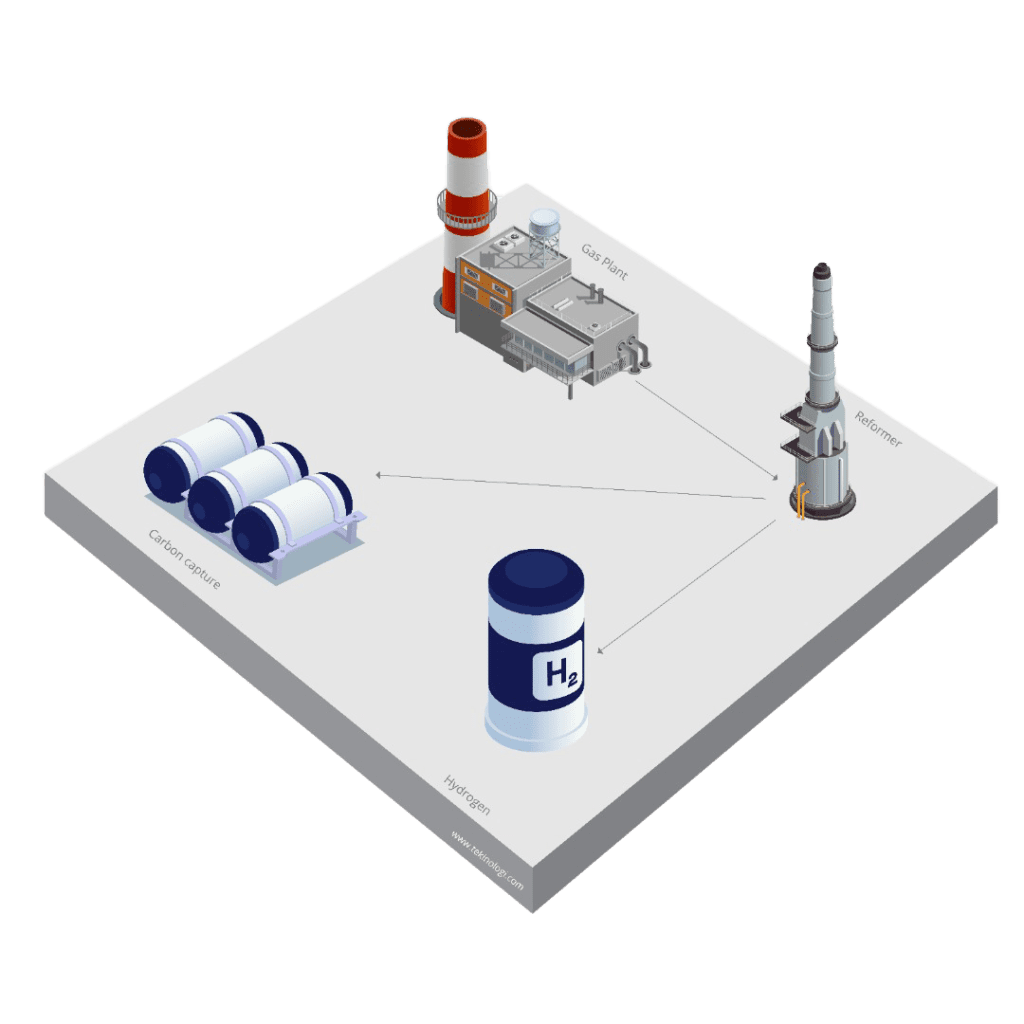What is Blue Hydrogen?
Blue hydrogen is a low-carbon hydrogen that is produced from fossil fuels mostly natural gas with the application of Carbon Capture, Utilization and Storage (CCUS) technologies in the production process.
Blue hydrogen production involves a process where natural gas is converted into hydrogen using advanced technology, making blue hydrogen energy a cleaner and efficient fuel option.
Carbon capture, utilization and storage is the process of capturing carbon dioxide (CO2) before it is released into the environment, transporting and using it for several products or storing it for decades. The CO2 can be stored in an underground geological formation or form of mineral carbonates.
It helps to prevent the emission of carbon into the atmosphere when producing hydrogen from fossil fuels such as coal and natural gas.
Blue hydrogen is commonly produced through steam methane reformation with carbon capture and storage (CCS) technology. Over 80% of carbon is captured and stored in the process.









